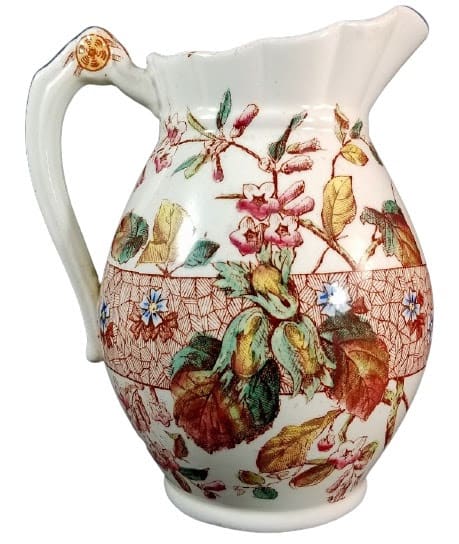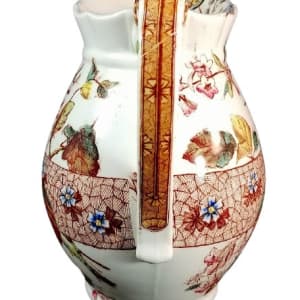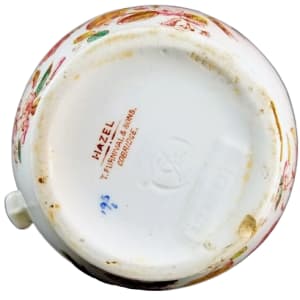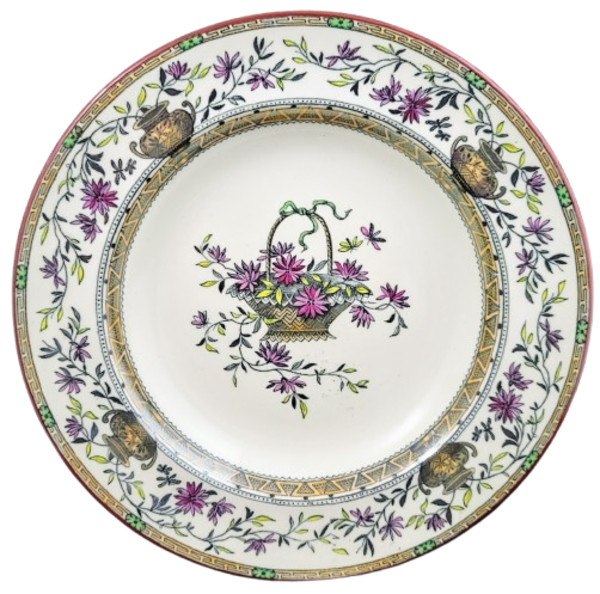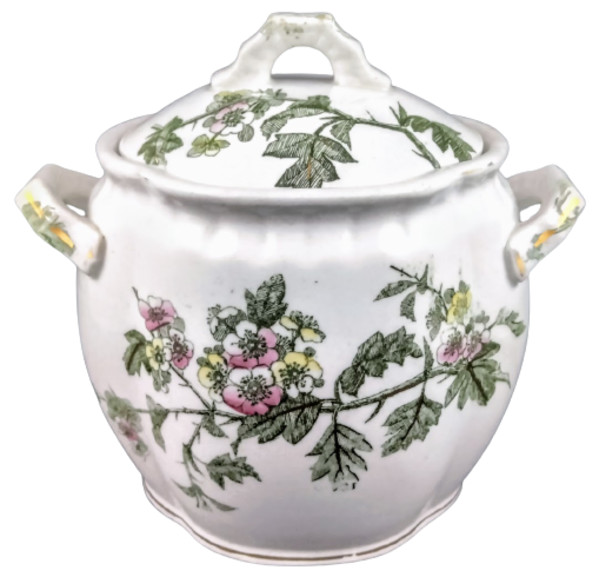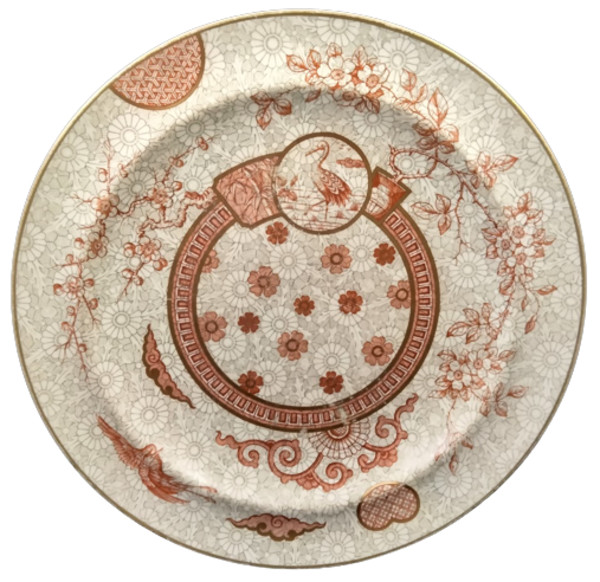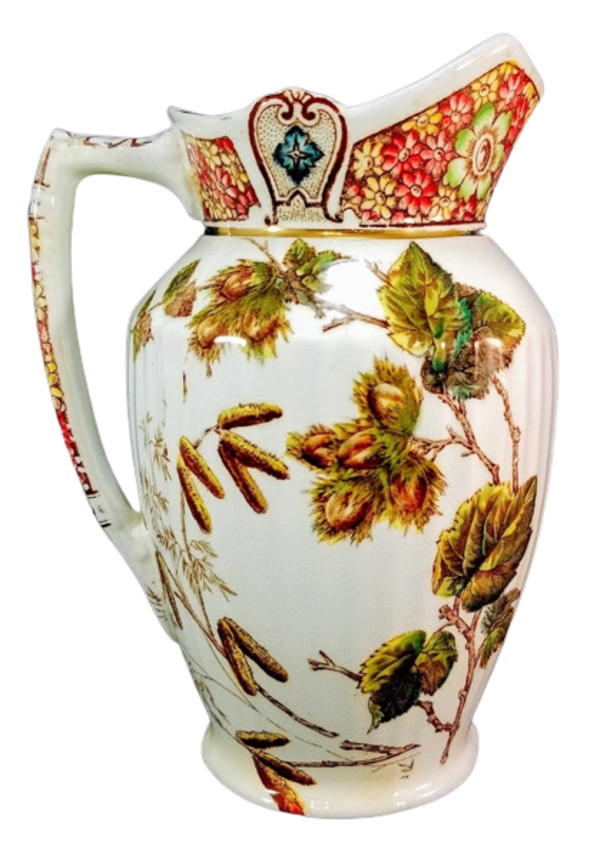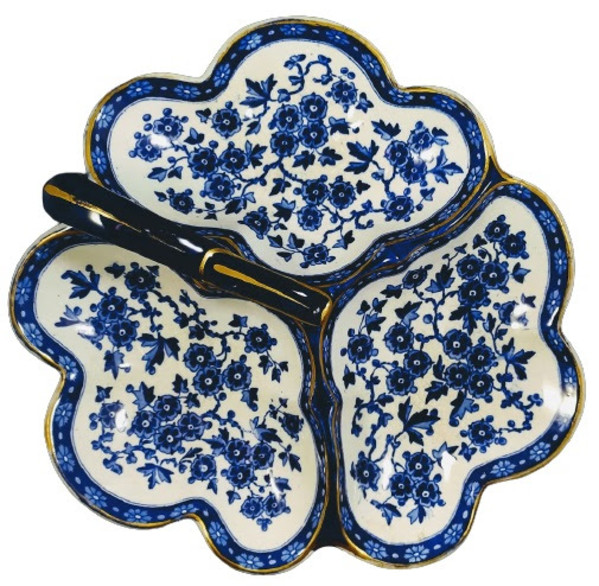- Thomas Furnival & Sons
- Hazel, c. 1878-1890
- Earthenware
- 6.25 x 5.25 in (15.88 x 13.34 cm)
-
Not For Sale
Pitcher, 6.25 x 5.25 inches. Printed and impressed maker's marks for Thomas Furnival & Sons. The painted number "195" also on the bottom may refer to the colors added to the pattern. This pattern features a wide central band composed of a patchwork of geometric shapes in-filled with repeating lines and decorated with clusters of five-petaled flowers. This band is woven above and below hazelnut branches with leaves and nuts and branches with clusters of trumpet-shaped flowers. The inner rim features three stems of flowers and buds. The handle features a slight variation of the central geometric band on the pitcher body and two circular medallions filled wit a stylized flowerhead on either side of the top.
Following involvement in previous partnerships, from 1851 Jacob and Thomas Furnival became partners at J & T Furnival. As well as earthenware manufacturers, they were in business as Grinders of Potters’ Materials at Etruria Vale, in the borough of Hanley. In 1859 Jacob Furnival, Thomas Furnival, and Francis Joseph Emery applied for a patent for “Improvements in apparatus for supporting articles of china and earthenware in kilns and ovens.” In May 1864 the partnership between Jacob and Thomas Furnival was dissolved and the business was continued by Thomas Furnival. Around 1871, Thomas Furnival the younger joined the business which became Thomas Furnival and Son. In 1876, another son, Samuel Bourne Furnival joined the business, which became Thomas Furnival and Sons. Around 1883 the company found itself in financial difficulty with liabilities of £60,000 (around £5 million in 2020 terms). In 1884 there was a notice of “Liquidation by Agreement” which allowed the company to trade out of its difficulties. Thomas Furnival Sr. retired in 1890 and the business was continued by his sons Thomas, Samuel, and Arthur. The style of the business became Furnivals.
The pattern is a riot of color and an explosion of floral and botanical items. The pattern is the same on both sides of the jug. Large blossoms in fall colors drape downward, while smaller flowers appear above and below them. There is a central band beneath some of the blossoms and it consists of a patchwork of small geometric squares infilled with lines. Inside the rim and lip of the pitcher is a spray of blue flowers and berries (see additional image).On the handle of the jug, precisely where one's thumb would fit, is a round cartouche with pinwheel marks.
- Subject Matter: Aesthetic (Floral & Botanical)
- Collections: Aesthetic Transferware, Thomas Furnival & Sons
